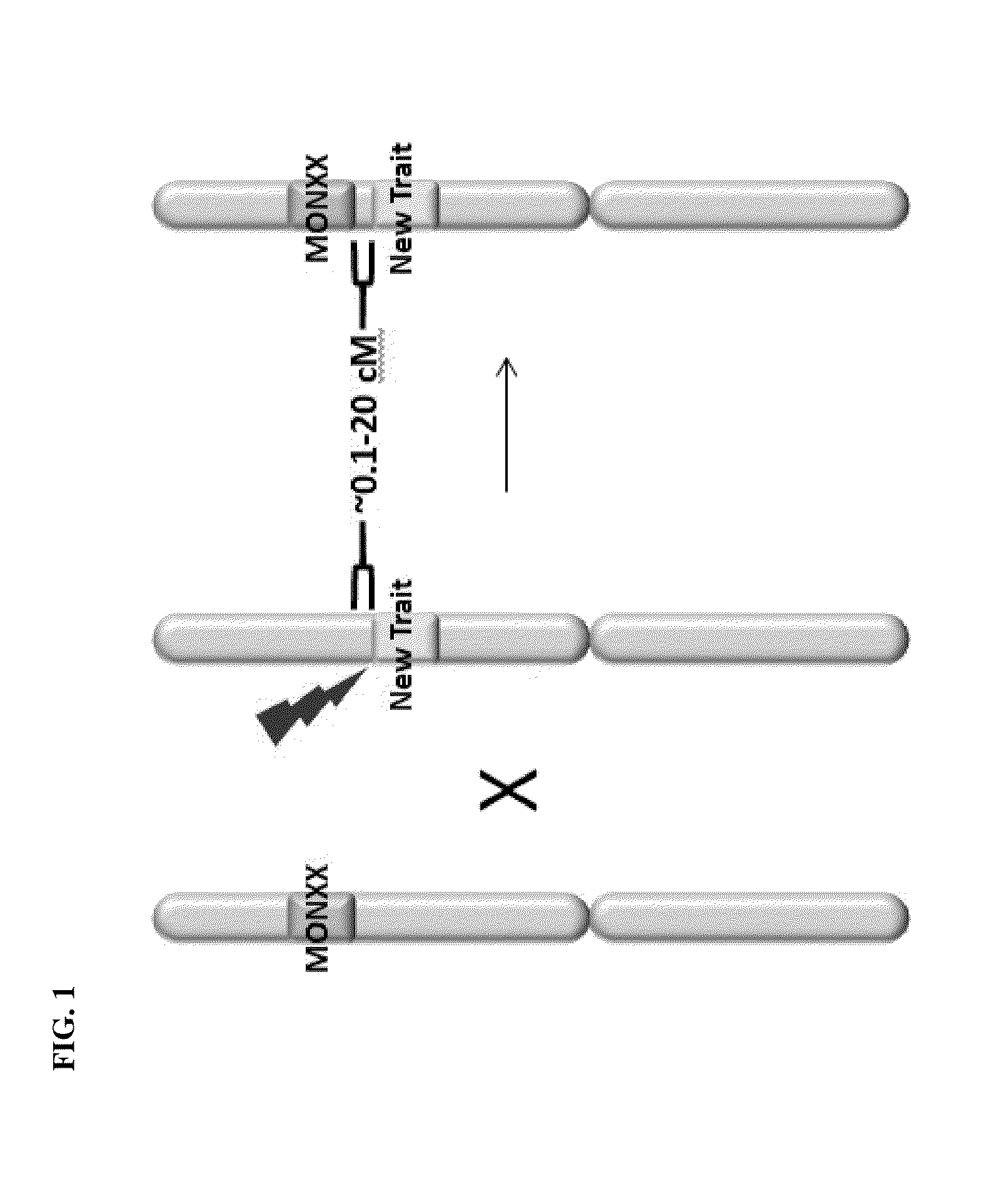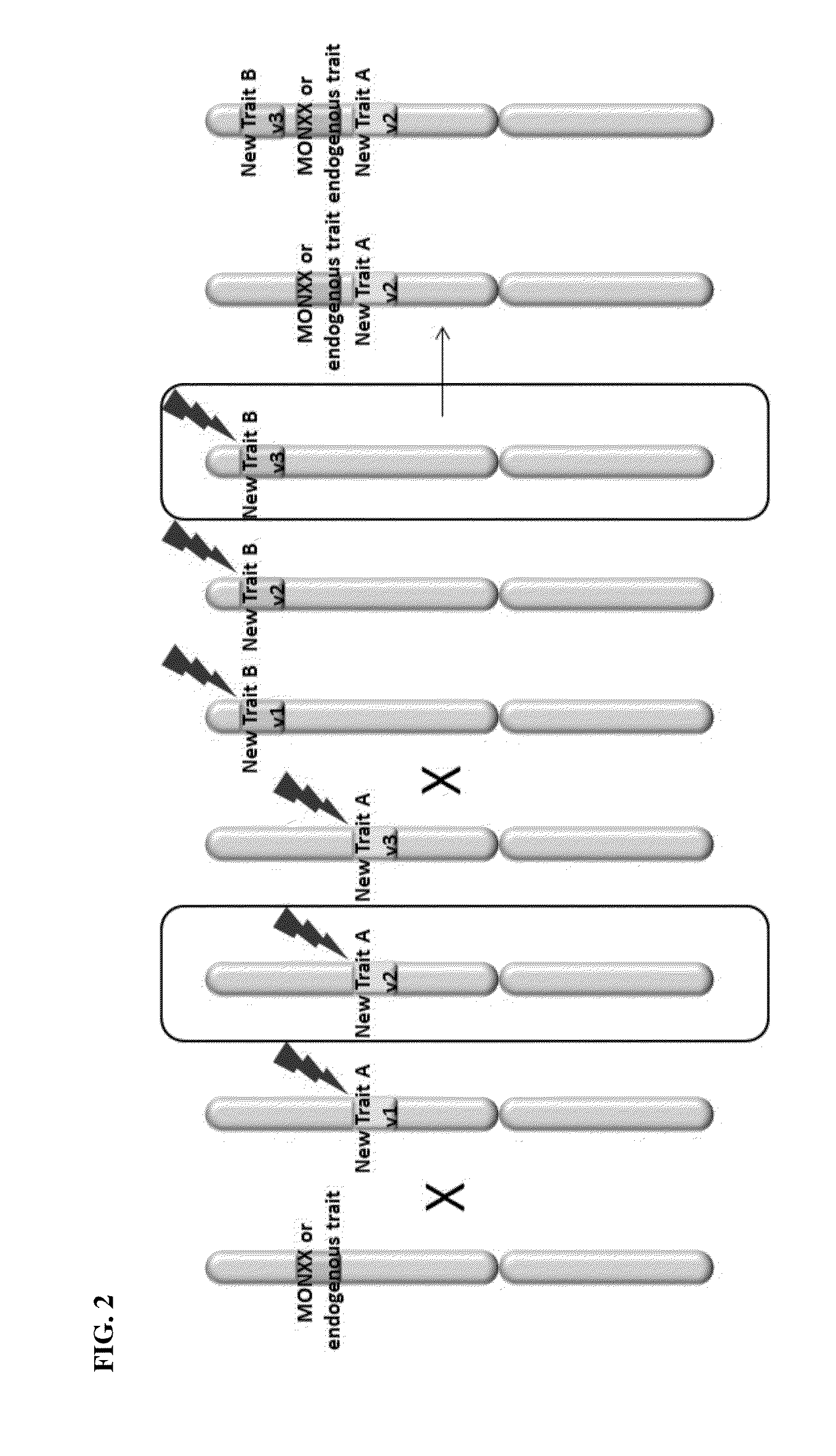Creation and transmission of megaloci
a megaloci and gene technology, applied in the field of molecular biology and genetics, can solve problems such as complex methods
- Summary
- Abstract
- Description
- Claims
- Application Information
AI Technical Summary
Benefits of technology
Problems solved by technology
Method used
Image
Examples
example 1
Targeted Integration of a Desired Transgene into a Chromosome
[0086]At least one transgene will be targeted for integration into the genome at a specific locus that is genetically linked at a distance to another transgene that was either integrated randomly or through site-directed integration (FIG. 1). Individual transgenes to be combined in a megalocus will be produced on individual supernumerary chromosomes or in regions of nuclear chromosomes. A desired transgene may be targeted using site-directed integration technologies that are well known in the art. Such methodologies may include insertion by endonucleases (e.g. TALE nucleases, meganucleases, CRISPRs, zinc finger nucleases), recombinases (e.g. TALE-recombinases, zinc finger recombinases, Cre / lox, FLP / FRT), programmed group II introns, zinc finger or TALE chimeric transposases, and homology arm-mediated gene targeting, optionally employing a plus / minus selection scheme. Other methodologies that are useful to place traits at s...
example 2
Crossing Plants Harboring Desired Transgenes and Screening of Progeny
[0088]Plants harboring different desired transgenes will be crossed to each other to produce hybrid progeny with transgenes from both parents. Recombination in the progeny plants may occur spontaneously (e.g. during meiosis) or may be induced by either site-specific recombinases, nucleases, or the like, including chemical or transgenic modulators of recombination, to generate progeny with chromosomes containing transgenes from both parents. Alternately, during meiosis of the hybrid, supernumerary chromosomes will pair and a meiotic exchange can occur between the two events.
[0089]Progeny will be screened for recombinant plants that have the transgenes from both parents in cis on a single chromosome. The transgenes will thus be genetically linked and segregate as a linkage block for trait integration.
[0090]A resulting plant containing a supernumerary chromosome harboring all transgenes from both parents can be crosse...
example 3
Addition of Multiple Desired Transgenes by Meiotic Recombination
[0092]Once a first recombinant is produced with desired transgenes from both initial parents, these progeny will then be crossed with a third parent harboring additional desired traits to produce further progeny with all of the desired traits. Progeny will then be screened from the hybrid for chromosomes containing both the first and the second blocks of desired transgenes (FIGS. 2 and 3). If desired, a plant containing a single chromosome with all desired transgenes may be selfed and progeny with two or more copies of the chromosome can be produced.
[0093]Once one or more plants with all desired transgenes from both blocks of transgenes is obtained and identified, the plant will be crossed with a further plant containing additional desired transgenes. Progeny will be screened as described above to identify plants harboring all desired transgenes from the original blocks and the further parent on a single chromosome. Add...
PUM
 Login to View More
Login to View More Abstract
Description
Claims
Application Information
 Login to View More
Login to View More - R&D
- Intellectual Property
- Life Sciences
- Materials
- Tech Scout
- Unparalleled Data Quality
- Higher Quality Content
- 60% Fewer Hallucinations
Browse by: Latest US Patents, China's latest patents, Technical Efficacy Thesaurus, Application Domain, Technology Topic, Popular Technical Reports.
© 2025 PatSnap. All rights reserved.Legal|Privacy policy|Modern Slavery Act Transparency Statement|Sitemap|About US| Contact US: help@patsnap.com



